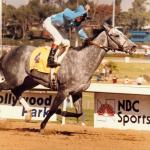
Seven Key Things to Know About the 2026 National Horseplayers Championship

If you’ve opened this story you probably are interested in the Kentucky Derby but might not know a whole lot about horse racing or the Triple Crown. Never fear, America’s Best Racing is here to help.
The Kentucky Derby is the most-watched horse race of the year in the United States and is widely considered one of the most important sporting events in the country, having grown to become much more than just a horse race since Aristides won the first edition in 1875.
The Kentucky Derby Presented by Woodford Reserve is the first jewel of the Triple Crown, a series of races that includes the Preakness Stakes two weeks later in Maryland and concludes with the Belmont Stakes three weeks after that in New York. The 13 horses that have won all three races are known as Triple Crown winners, but let’s not get too far ahead of ourselves.
Starting with the basics of who, what, when, where, and why, and then spreading out from there, let’s explore the Kentucky Derby.
The Kentucky Derby is restricted to 3-year-old racehorses, male or female, so a Thoroughbred is eligible for the race only once in their lives. Horses must be nominated to the Triple Crown and then qualify for the Kentucky Derby through a series of races that award points to the top four finishers. The Kentucky Derby field is restricted to 20 runners.
Three fillies (female 3-year-old racehorses) have won the Kentucky Derby: Regret (1915), Genuine Risk (1980), and Winning Colors (1988).
The Kentucky Derby is often called the run for the roses because the winner has a blanket of roses draped over his/her back after the race. As mentioned above, the Kentucky Derby is only for 3-year-olds and limited to 20 starters. The race itself is a 1 ¼-mile race on a dirt main track that is a test of both speed and stamina.
The oldest continuously held major sporting event in the U.S., the race also is commonly referred to as “The Most Exciting Two Minutes in Sports.”
The Kentucky Derby is held every year on the first Saturday in May. From 1946 through 2019, the race was held on the first Saturday of the month of May until COVID-19 in 2020 forced the postponement of the race until September. The Kentucky Derby returned to its usual place on the calendar in 2021. In 2024, the Kentucky Derby was held for the 150th time and won by Mystik Dan, and last year’s winner, Sovereignty, went on to add victories in the Belmont Stakes Presented by NYRA Bets and DraftKings Travers Stakes.
The 2026 Kentucky Derby will be the 152nd edition of the race.
The race has been held outside the month of May only three times: Monday, April 29, 1901; Saturday, June 9, 1945; and Sept. 5, 2020. The Kentucky Derby has been run on a Saturday on 117 occasions and each day of the week except Sunday. The last time it wasn’t staged on a Saturday was 1910.
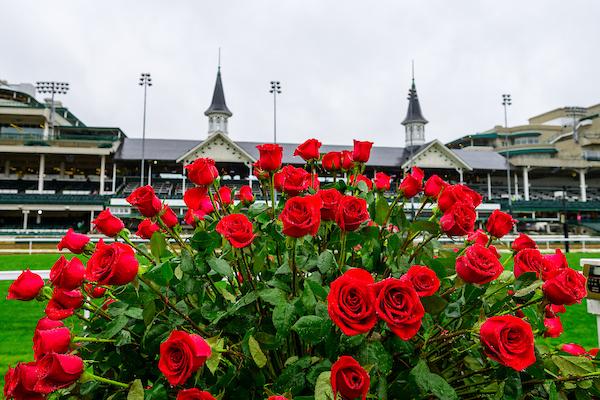
Kentucky is the epicenter of the Thoroughbred racehorse in the United States with roughly 47% of all racehorses bred in the state, so it makes sense that the most important race in the country would take place in Kentucky. Churchill Downs in Louisville – about 70 miles west of the breeding capital in Lexington – is the host track of the Kentucky Derby under its famed Twin Spires that sit atop the racetrack grandstand.
Churchill Downs, located on Central Avenue in Louisville, opened in 1875 and held the first Kentucky Derby the same year. The track is named for John and Henry Churchill, who leased 80 acres of land to their nephew, Meriwether Lewis Clark Jr. (grandson of explorer William Clark).
The history of the Kentucky Derby originates in 1872, when the aforementioned Meriwether Lewis Clark traveled to Europe and attended the Epsom Derby in England, a race run since 1780, and met members of the French Jockey Club. Inspired by his trip and experience in Europe, he set out to create a similar racing event in the U.S.
Gifted the land to develop a racetrack and, after formally organizing the Louisville Jockey Club, Clark and his new club raised the funding to build Churchill Downs in Louisville. On May 17, 1875, the track opened its gates for the first time and the Louisville Jockey Club sponsored the inaugural Kentucky Derby. Fifteen 3-year-old Thoroughbred racehorses competed in the 1 ½-mile race in front of approximately 10,000 fans with Aristides prevailing.
In the years since that first running, the Kentucky Derby has evolved and become the most important event on the racing calendar as well as the main focus of horse racing fans every spring, a time when 3-year-old racehorses frequently mature mentally and develop physically into elite athletes.
The race will be televised, as usual, on NBC during the network’s main telecast. NBC Sports holds exclusive broadcast rights to the Kentucky Derby and will showcase the race to millions of viewers worldwide as the centerpiece of its coverage spread across two days. Other races will be streamed on Peacock and shown on other networks under the NBC umbrella and also televised on FanDuel TV.
America’s Best Racing will provide updates right here on what to expect May 2, 2026, at Churchill Downs, including several handy guides for those planning to attend.
Now that you know the nuts and bolts, you need to pick a horse to root for in the Kentucky Derby, but how do you decide? The easy answer is that it’s the horse, of course!
Racehorses, like people, have different personalities and qualities on and off the track.
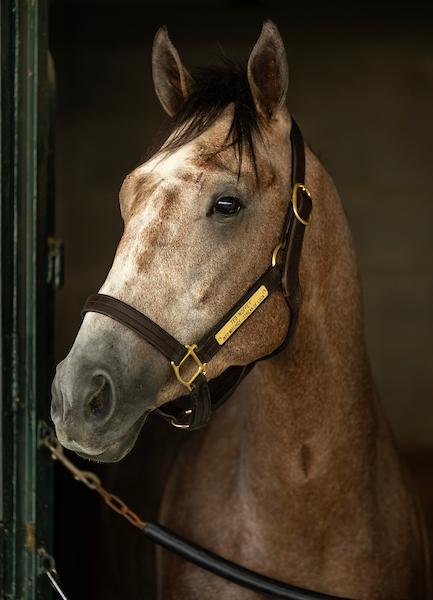
While Thoroughbreds have a reputation for being a bit hot-blooded, there are racehorses that love to be doted upon and fed carrots, apples, and peppermints while others who might take a chunk out of your back if you’re not paying attention. A flashy racehorse might catch your eye or maybe a plain horse with humble beginnings is more your type. Some horses are all speed and want to go-go-go as soon as the race starts; others prefer to race at the back of the pack and wait until the end and try for and eye-catching rally (note: I’m a sucker for this type of runner, which is called a closer). Sometimes it’s as simple as liking a racehorse’s name (see below).
We’ll have a slideshow of the Kentucky Derby contenders and nicknames and quirks for the horses to help you pick in the coming months as well as multiple other features like our handy Derby Cheat Sheet and easy “At a Glance” look at the field for the run for the roses to help you find your Derby horse. We'll also have a feature on how fast the contenders finished in their final prep races as well as a historical look at trends to keep an eye on and some key details about the importance of post positions. Of course, please also check out our Triple Crown page that features the leading contenders and links to their profiles.
There obviously are also financial reasons to root for a Kentucky Derby runner. If you bet $5 to win on a horse who is 20-1 odds, you’re basically required to hoot and holler if that horse is vying for the lead in the Churchill Downs stretch on Derby day. Shouting something like “C’mon, one time!” or “Bring him home for me, [insert jockey name]!” make you look like you’re a seasoned veteran at this stuff.
One thing that often sparks the curiosity of newcomers to horse racing is how racehorses get their names. The short answer is that owners get to choose the name of their racehorse, but it must be approved by The Jockey Club, which serves as the official registry for North American Thoroughbred racehorses and has a set of rules for naming horses.

But there is so much more to naming racehorses. Sometimes they are inspired by pop culture themes like Star Wars or Star Trek, sometimes a sport or a team is the inspiration, and patriotism is often a central theme for racing stables. Sometimes a single Tweet can serve as the inspiration as was the case with LNJ Foxwoods’ two-time champion Covfefe. Often, stables name racehorses after children or after a dearly departed family member.
Many racehorse sires (fathers) spark a wave of names. Storm Cat led to notable “cats” like 1994 Preakness Stakes winner Tabasco Cat and 1999 Breeders’ Cup Classic winner Cat Thief, while Kitten’s Joy was the sire of champion Big Blue Kitten and 2015 Breeders’ Cup Filly and Mare Turf winner Stephanie’s Kitten.
Most often, however, racehorses are named for some combination of their pedigree or parentage, using the names of sire (father) and dam (mother) to form a name. Often it can be incredibly straightforward; for example, owner-breeder Chuck Fipke tries to keep it simple since he has a fairly vast breeding and racing operation with names like Forever Unbridled (by sire Unbridled’s Song out of dam Lemons Forever) or Perfect Shirl (by Perfect Soul out of Lady Shirl).
Using that structure of building off the names of both father and mother, owners can also get pretty creative with names like 2020 Belmont Stakes winner Tiz the Law (by Constitution out of Tizfiz) or stakes winner Shoplifted (by Into Mischief out of Shopit).
If a Derby runner’s name catches your eye, you might have your horse. Or maybe, there is more to the story that makes a horse easy to cheer for …
You might see the term “connections” for a horse mentioned, which simply means the people connected to the Kentucky Derby runners.
Like racehorses, the jockeys, trainers, owners, and breeders of these wonderful animals come from all sorts of backgrounds and across the country – there are a trio of Hall of Fame trainers whose legacies trace back to South Dakota – so this is a sport with a seemingly endless array of stories. If you read a story that connects you with someone, you’ve got your Kentucky Derby horse. Twenty-one years ago, as a Delawarean whose parents were from Philadelphia, I connected with unlikely 2004 Kentucky Derby winner Smarty Jones, whose owners raced as Someday Farm with only one horse left in their stable and with a Pennsylvania-based trainer and jockey. The next year Delaware Park-based Afleet Alex helped raise money to combat childhood cancer via Alex’s Lemonade Stand, and I was firmly on his bandwagon when he won the 2005 Preakness and Belmont Stakes. Keep an eye out for compelling human-interest stories here at America’s Best Racing through social media, and on other racing websites to find a connection. In 2024, fans of the Philadelphia Phillies and Washington Nationals were excited to learn that All-Star outfielder and World Champion Jayson Werth owned a minority interest in Kentucky Derby hopeful Dornoch, who went on to win the Belmont Stakes.
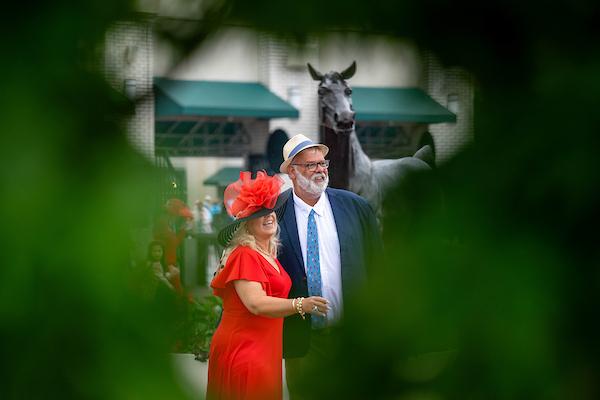
The Kentucky Derby has evolved from a sporting event into part of the fabric of American culture. As you might expect, there are many traditions associated with the race from the garland of roses presented to the winner to the Twin Spires that overlook the Churchill Downs stretch. But we are only scratching the surface.
Other notable traditions include hosting the Kentucky Oaks for 3-year-old fillies on the Friday before the Kentucky Derby; the mint julep, the official drink of the Kentucky Derby (be sure to read this handy guide); the singing of “My Old Kentucky Home” when the racehorses walk onto the racetrack before the start of the race; celebrities coming from across the country and the world to attend the race; and the Kentucky Derby hat as the focal point of the fashion of the event.
Part of the allure of the Kentucky Derby each year is undoubtedly the party aspect. The infield on Kentucky Derby day typically draws all kinds of fans from partiers to families to gamblers and more. Many mint juleps are consumed in the infield at a typical Kentucky Derby, which from 2000 to 2019 drew from 140,000 to 170,000 total fans. After the pandemic supressed attendance for a few years, the Derby drew more than 156,000 fans in 2024 and more than 147,000 fans braved the rain in 2025.
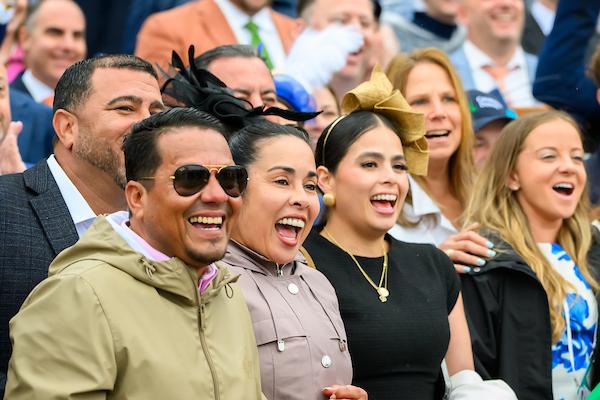
While there are certainly those that travel to Louisville for the party – both the main event and dozens of others in Louisville the week leading up to the Kentucky Derby – there is much more to it than food and booze. You’ll see thousands of fans wandering around Churchill Downs wide-eyed soaking in the atmosphere, plenty of gamblers with their eyes glued to the program, and others just there to have a great time and socialize on the big day. There really is something for everyone.
But the party is far from limited to Churchill and the surrounding area. Tracks across the country regularly host fans on Derby day, sometimes even when they don’t offer live racing, and people all over the U.S. host family and friends to celebrate at home. It’s never been easier to track down food and drink recipes, order hats and outfits online, and even bet a few bucks without leaving the comforts of home. For those interested in hosting a party, check out this terrific guide an unforgettable Kentucky Derby soiree.
Did You Know? In 2015, Churchill Downs set an attendance record when 170,513 people attended the Kentucky Derby. The previous record was 165,307 in 2012.
It’s never been easier to place a bet on the Kentucky Derby. You can visit your local track on the big day or you can bet from home using what is called an advance-deposit-wagering platform. Using an “ADW” requires signing up for an account and depositing money in advance that can be used to bet online. Sometimes, it can be a bit of a process to start up, so don’t wait until the last minute if you are hoping to place some bets on Kentucky Derby day. Two of our favorite online horse-racing betting sites are 1/ST Bet and NYRA Bets, and Twinspires is the official online betting platform of Churchill Downs. Most of them offer terrific bonuses for new members (check the links for latest promotions).
The team at America’s Best Racing also put our heads together to provide some Dos and Don’ts for betting online. Be sure to bookmark our Cheat Sheet with detailed information on all of the contenders. We will put together a feature on which runners would benefit from rain on Kentucky Derby day, and we even have the leading tool in the sport for figuring out how to make your bets and what they’ll cost: ABR’s Gambling Calculator.
If you are reading this story in particular, however, you might be looking for just the basics and we can help there, too. We have a whole post called “Betting on Horse Racing, Explained” with a focus on bettors just like you with limited experience. Below is small section as a sample:
The Basics
Win bet – A bet on a horse to finish first.
Place bet – A bet on a horse to finish first or second.
Show bet – A bet on a horse to finish in the money; third or better.
In the money – A horse that finishes first, second, or third.
Across the board – A bet on a horse to win, place, and show. If the horse wins, the bettor collects three ways; if second, two ways (place, show); and if third, one way, losing the win and place bets. It's actually three bets.
Morning line – The odds that the track handicapper predicts a horse will be to win the race when it starts.
Did you Know? The record for money wagered Kentucky Derby day came in 2025 when $349 million was wagered on the card of races at Churchill Downs.
For many years, the field for the Kentucky Derby was determined by purse earnings in a specific classification of stakes races, but that changed in 2013 when Churchill Downs unveiled a new points system that has subsequently evolved over the years.
The “Road to the Kentucky Derby” typically begins in September of the previous year and extends through to the final points races in April, just a few weeks before the Kentucky Derby. The races are slotted into one of two categories: Kentucky Derby Prep Season (21 races for this year’s Derby) and Kentucky Derby Championship Series (15 races).
Kentucky Derby Prep Season qualifying races award points to the top-five finishers on a scale of either 10-5-3-2-1 or 20-10-6-4-2, with the exception of the Breeders’ Cup Juvenile, which has a 30-15-9-6-3 scale to reflect the importance of that race. The 20-10-6-4-2-scale Prep Season races begin in mid-January 2026.
Kentucky Derby Championship Series races begin Feb. 14 with the Risen Star Stakes at Fair Grounds, and award points based on one of two scales: 50-25-15-10-5 points, respectively, to the top five or 100-50-25-15-10 for the most important races in the final six weeks leading up to the Kentucky Derby. There is one exception from this group, the Lexington Stakes at Keeneland three weeks before the Kentucky Derby, which awards points on a 20-8-6-4-2 scale.
The 3-year-olds amass points in qualifying races and the top 17 earners among Triple Crown nominated horses earn a place in the starting gate on the first Saturday in May. Up to two invitations will be extended to the top point-earners in the Euro/Mideast Road to the Kentucky Derby and one invitation will be extended to the top point-earners in the Japan Road to the Kentucky Derby. The Derby field has been limited to 20 starters since 1975. At least 20 horses have entered the 1 ¼-mile race for 3-year-olds in 24 of the last 27 years.

Racehorses come in many different sizes, ranging from about 900 to 1,400 pounds, and colors, including Bay, Black, Chestnut, Dark Bay or Brown, or Gray or Roan. There also has been in recent years an increase in White Thoroughbreds.
Many racehorses stand out because of markings, like a white blaze or star on their heads or one or more white legs or feet.
When a Thoroughbred is born, it is called a foal, which is a name for a young horse in the first year of its life. Thoroughbreds are called weanlings after they have been separated from their mothers; and a yearling refers to a male or female Thoroughbred in its second calendar year of life, which commences Jan. 1 of the year following its birth.
Jan. 1 is the official birthday for all Thoroughbreds.
All Thoroughbred racehorses must be registered according to the guidelines of The Jockey Club and races begin for racehorses in the spring of their 2-year-olds seasons.
Did You Know? The most common color of Kentucky Derby winners over the years is Bay with 58 winners, including last year's winner Sovereignty and 2024 winner Mystik Dan, followed by Chestnut with 50 Derby winners, including 2023 winner Mage.
Some of the best male and female racehorses go on to a breeding career in retirement, but only the best male racehorses become sires (fathers) and roughly 24,700 female Thoroughbreds were bred in 2025. The good news is Thoroughbred racehorses are incredibly versatile and often go on to second careers at what is called OTTBs (off-track Thoroughbreds).

Thoroughbreds are smart, competitive animals and if they’ve spent time stabled at a racetrack, which the vast majority have, they’ve seen and heard pretty much everything.
Retired racehorses can go on to second careers in Dressage, Eventing, Show Jumping, Polo, etc. Each year the Retired Racehorse Project hosts the Thoroughbred Makeover, the largest Thoroughbred retraining competition in the world for recently-retired ex-racehorses.
OTTBs can become pleasure horses and sometimes they just live a life of leisure, ranging from those at Old Friends in Georgetown, Ky. to others who simply get adopted by someone who followed their career or loves horses.
In recent years, studies have also shown racehorses can be powerful partners for therapy, including Equine-Assisted Therapy for treating veterans with PTSD and the Square Peg Foundation for students.
The Thoroughbred industry created the Thoroughbred Aftercare Alliance, funded initially by Breeders’ Cup Ltd., The Jockey Club, and Keeneland Association. The TAA is a 501(c)(3) nonprofit that accredits, inspects, and awards grants to approved aftercare organizations to retrain, retire, and rehome Thoroughbreds using industry-wide funding.
Since 2012, the TAA has granted more than $36 million to accredited aftercare organizations and 18,500 Thoroughbreds have been retrained, rehomed, or retired by accredited organizations.